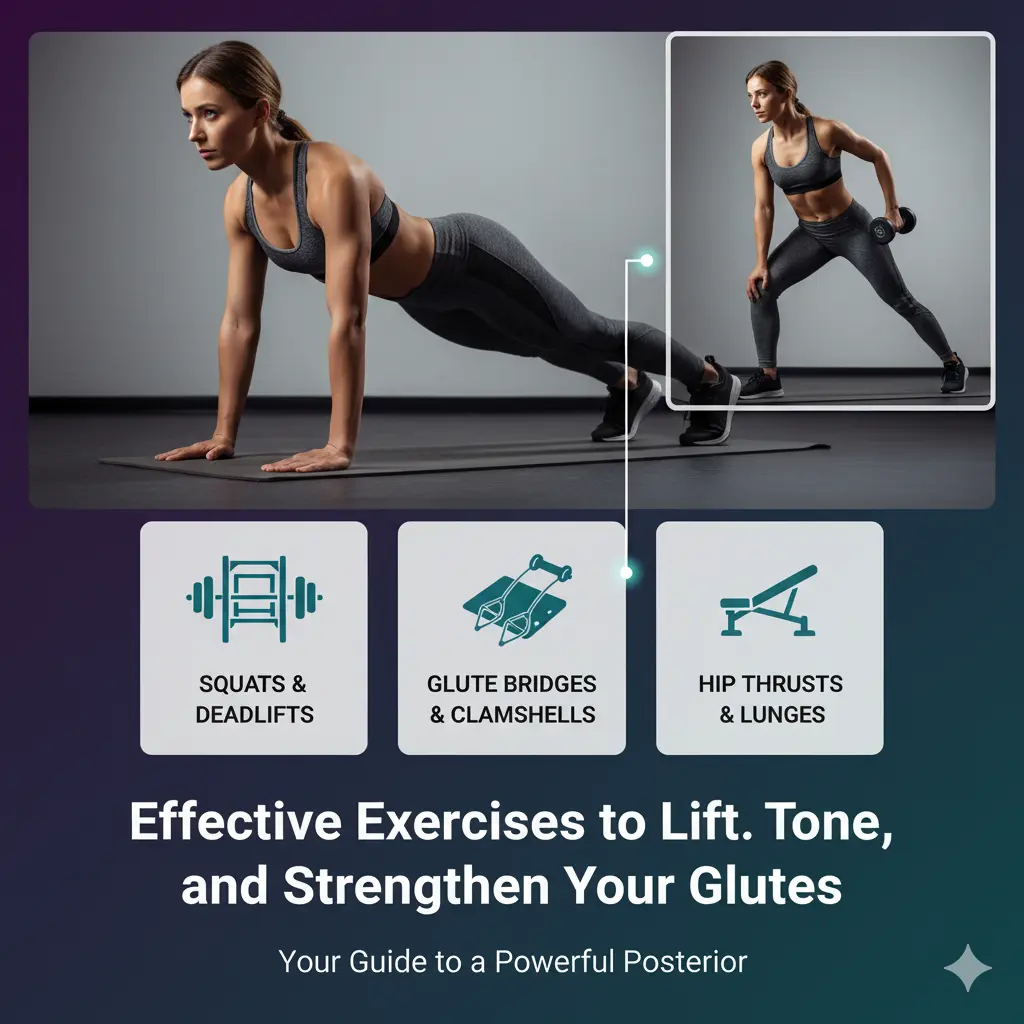When it comes to building a strong, confident body, few things make as much of a difference as glute training. Your glutes—those powerful muscles in your hips and backside—not only shape your appearance but also support daily movement, athletic performance, and even your posture.
Think about it: whether you’re lifting a box at work, pushing a stroller, climbing stairs at the train station, or performing on a sports field, your glutes are working behind the scenes. Strong glutes provide balance, prevent injuries, and make everyday tasks easier. And the best part? You don’t need a fancy gym to get started, just the right exercises, a little consistency, and a willingness to move.
Why Your Glutes Matter More Than You Think
Your gluteal muscles are among the largest and strongest in the body. They consist of three main parts:
- Gluteus maximus: the powerhouse, responsible for hip extension and giving your backside its shape.
- Gluteus medius: helps with balance and stability, especially when walking or running.
- Gluteus minimus: supports hip movement and works in conjunction with the other two muscles for smooth, coordinated motion.
In practical terms, stronger glutes can mean fewer backaches after sitting at a desk all day, more energy for weekend hikes, or the ability to carry heavy groceries up a flight of stairs without strain. It’s a muscle group that pays off in real life, not just in the mirror.
Simple Yet Powerful Glute Exercises
You don’t need complicated routines to get results. Here are some effective exercises that anyone, from a busy professional to an athlete, can incorporate into their weekly routine.
Squats
Squats are the gold standard for building glute strength. Stand with feet shoulder-width apart, lower your body as if you’re sitting in a chair, then return to standing. Imagine lowering yourself into your favorite café chair after a long day. The movement should feel natural, not forced.
Glute Bridges
Lie on your back, bend your knees, and keep your feet flat on the floor. Push through your heels to lift your hips toward the ceiling, then lower back down. Think of it like lifting a box into the trunk of a car you’re using your hips and legs, not your back.
Step-Ups
Find a sturdy bench or step. Step one foot up, drive through your heel, and bring the other foot to meet it. This mimics everyday tasks, such as stepping onto a bus or climbing stairs, but with more intention and control.
Lunges
Step one leg forward, bend both knees, and lower until your back knee almost touches the ground. Then push back to standing. Lunges work each side independently, balancing strength and preventing one leg from dominating the other.
Hip Thrusts
Similar to glute bridges, but with your upper back resting on a couch or bench for more range of motion. If you’ve ever lifted a heavy backpack from the floor, you’ll recognize the movement pattern.
Making Glute Workouts Part of Your Routine
The best workout is the one you can stick to. For office workers, try quick sets of squats or bridges during breaks to counter long hours of sitting. For parents, step-ups can be done while kids play nearby. Athletes can add resistance bands or weights for an extra challenge.
Consistency is more important than intensity at the start. Even ten minutes a day adds up, much like small investments that compound over time. Just as industries like construction rely on solid foundations before building upward, your body benefits from strengthening these base muscles before tackling advanced moves.
Tools to Help You Progress
As you grow stronger, you might want extra support to challenge your glutes more effectively. That’s where tools like the Booty Trainer by Le Peach can make a difference. Adding resistance helps activate the muscles more deeply, speeding up toning and strength results without needing a full gym setup. It’s an accessible way to bring structure to your routine and track your improvements.
Beyond Looks: The Bigger Benefits of Strong Glutes
Glute training isn’t just about aesthetics, it’s about health, performance, and confidence. Research indicates that strong glutes can reduce the risk of lower back pain, enhance running efficiency, and even improve balance in older adults. That means investing in these muscles pays dividends across every stage of life.
Just as societies have relied on physical fitness for centuries to build resilience and endurance, strengthening your glutes lays a foundation for a more active and pain-free lifestyle. Whether you’re lifting heavy at work, practicing yoga, or simply wanting to feel better in your own skin, these muscles play a crucial role.
Final Thoughts
Lifting, toning, and strengthening your glutes doesn’t have to be complicated. With simple exercises like squats, bridges, lunges, and step-ups, paired with the right tools and consistency, you’ll see and feel the benefits. Your glutes are more than a fitness trend; they’re a key to moving better, living stronger, and enjoying everyday life with less strain.
Start small, stay consistent, and remember: every rep is an investment in your strength, balance, and confidence.







